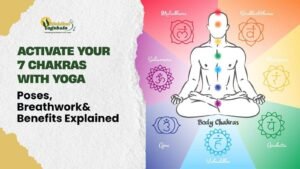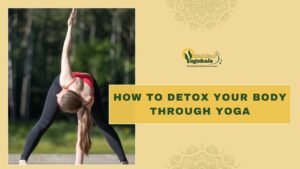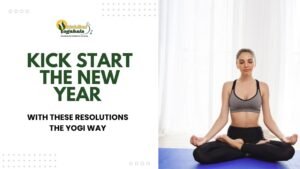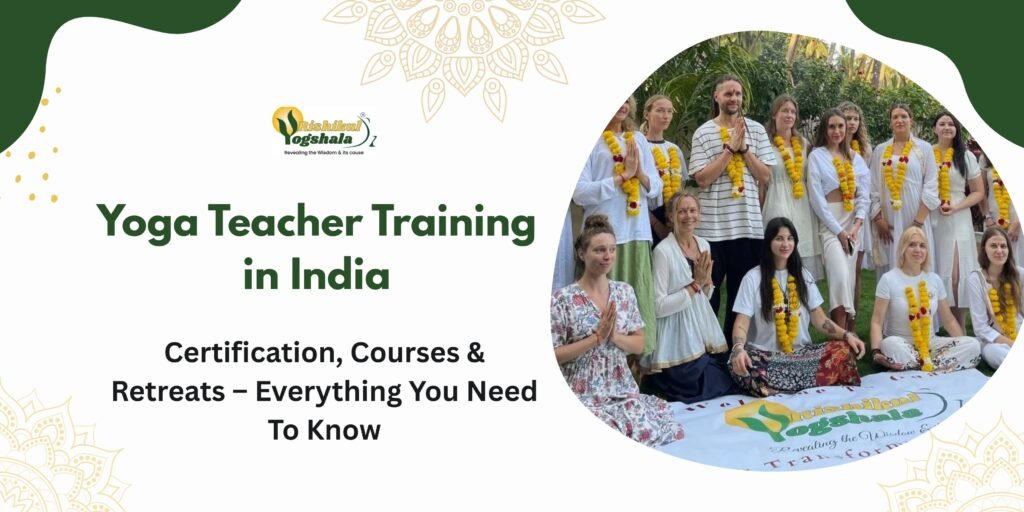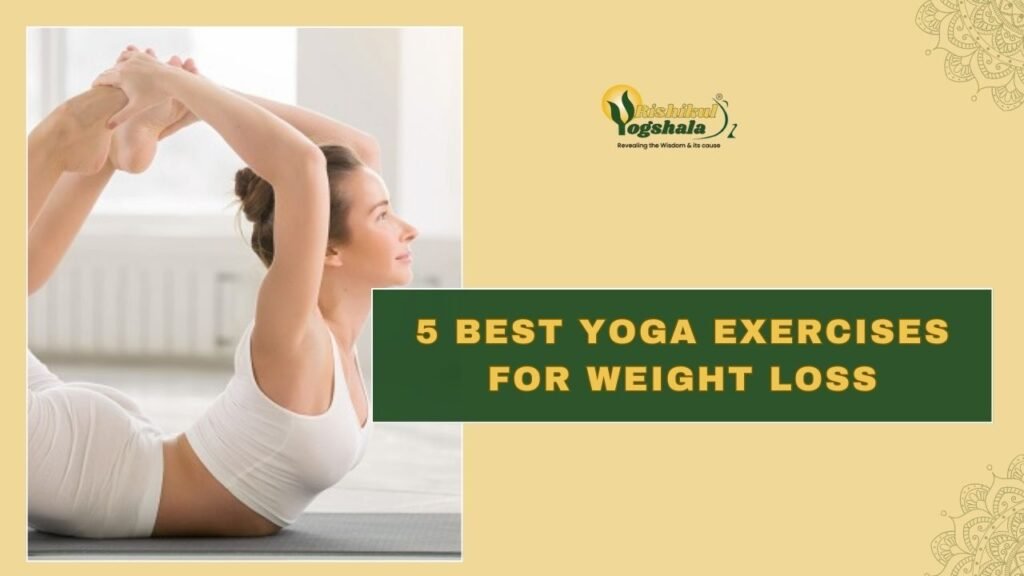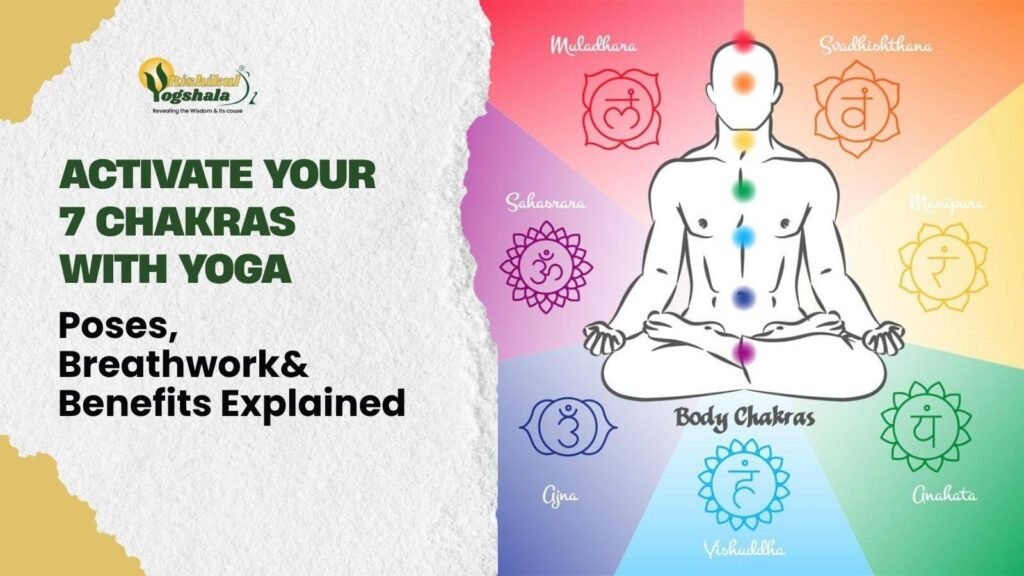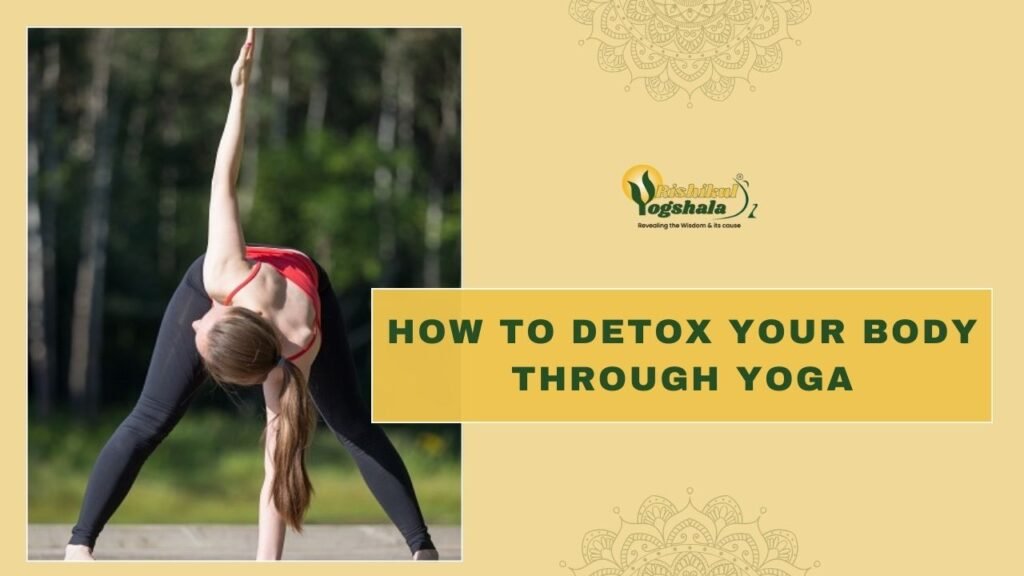6 Powerful Yoga Breathing Techniques to Calm Your Mind & Energize Your Body
- Blog
- /
- Yoga Techniques and Tutorials
- /
- 6 Powerful Yoga Breathing...
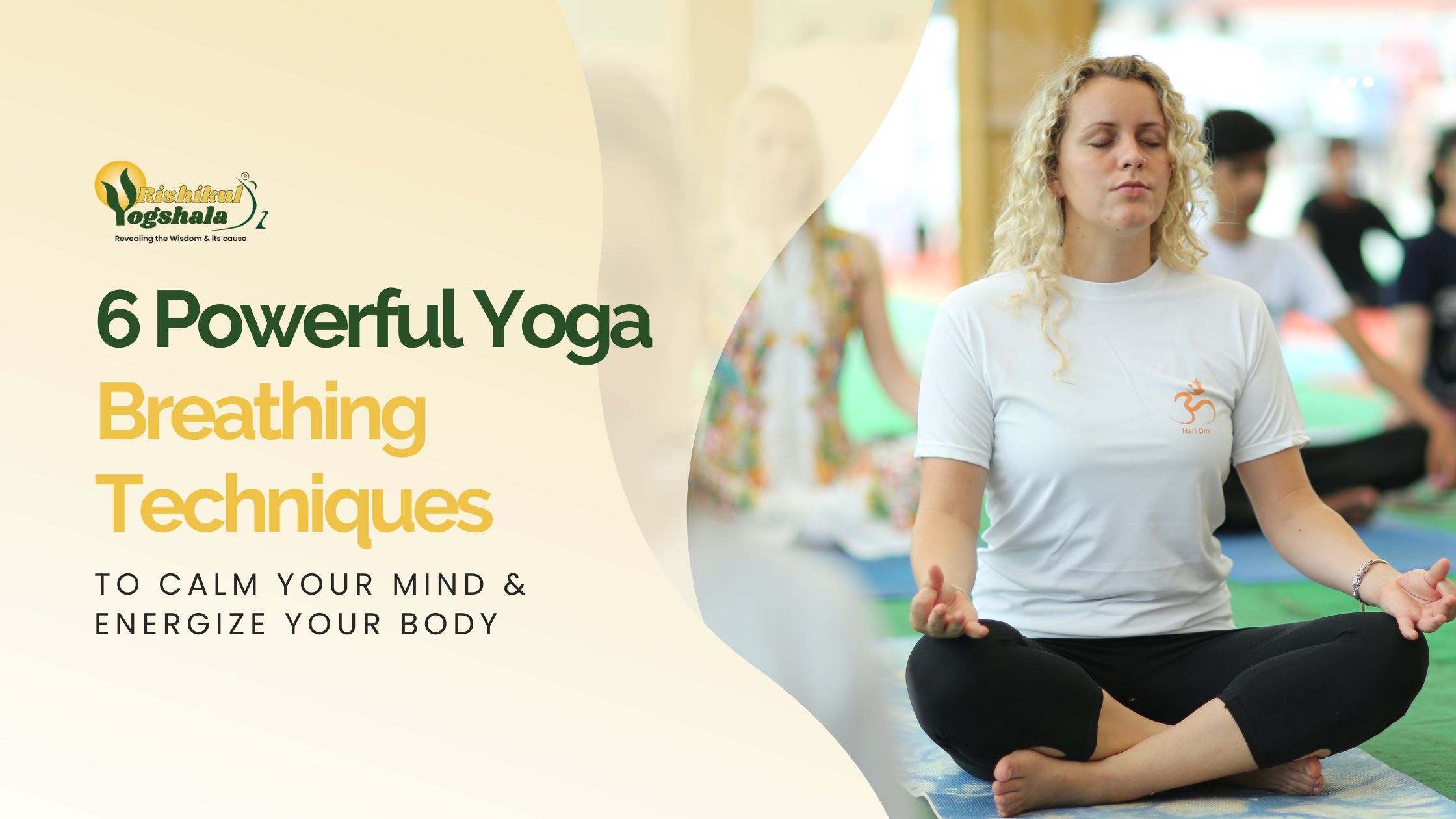
Prana is the life force energy that flows within us, closely linked to our breath according to yoga philosophy, which is why breathing exercises called “Pranayama” in Ayurveda. In Yoga, breathing is not just limited to the air we inhale or the oxygen our body uses, but a subtle energy that nourishes and connects the body and mind. By understanding and working with this connection between our mind and prana, we can bring balance, calm, and clarity into our lives. One of the simplest and most effective ways to soothe a restless mind is by observing and regulating our breath.
When we feel stressed or agitated, our breath becomes shallow and rapid. When we are calm, focused, or relaxed, it slows and deepens, sometimes so gently that we hardly notice it. Interestingly, this is a two-way connection: just as the mind affects our breath, our breath can influence and calm the mind. The next time you feel anxious or overwhelmed, try taking a slow, mindful breath — you’ll notice your mind settling almost immediately.
It is the uniqueness of yoga and its associated breathing exercises that work with prana to bring you back to stability, focus, and grounding while at the same time giving your mind a calming effect.
Breathing is mentioned in many chapters of the Yoga Sutra and comes in various types of yoga breathing. Here, we will explore the 6 most effective types of yoga breathing and their benefits for your mind and body.
What are the Different Types of Breathing in Yoga?
1. Three-Part Breath (Dirga Pranayama)
The Three Part Breath, or Dirga Pranayama, is one of the great foundational pranayamas in Yoga. The yoga breathing technique named “three-part” signifies the three areas into which those breaths are divided: the belly, the ribs, and the chest. This full and even breath awakens the body while relaxing the mind, helping you feel grounded and centred.
The term Dirga means “complete” in Sanskrit, referring to the breath, and it is often used for long, deep breathing. By doing it, you call attention to all the parts of your body involved in breathing, and control: how are they moving?… mindfulness of (Pleasure/Discomfort), what directions?” etc. It’s best for new practitioners, due to its mildness, soothing quality, and simplicity.
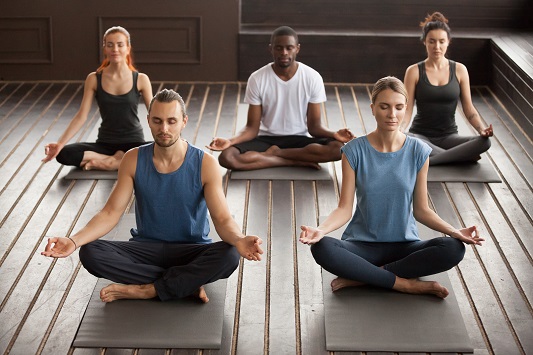
How To Practice:
- Find a quiet, comfortable place to sit or lie down. Close the eyes, or gaze softly.
- Simply notice your breath in its natural state: Start by observing how the breath is[it’ll likely be shallow or deep/short/long] without trying to make any changes.
- Take a deep breath, letting your belly expand on the inhale. Exhale completely as you try to draw your navel toward your spine. Repeat 5 breaths.
- After filling the belly, let the breath expand into your rib cage. Exhale from the ribs first, then the belly. Repeat 5 breaths.
- Exhale all the air out completely of your lungs, then finally inhale as deeply as you can to fill up your belly, ribs, and chest, paying attention to the upper chest again, around where your heart is. Exhale completely. Repeat 10 breaths.
- When you feel comfortable with both, flow smoothly through the three parts without any long pause.
Yoga Breathing Tips:
- Repetition is the key – practice every day in the mornings and evenings, too if possible
- Concentrate on each aspect of the breath to heighten sensitivity.
- Relax the nervous system at a slow, easy pace.
- Alternate Nostril Breathing (Nadi Shodhana)
Benefits of Dirga Pranayama
- Promotes relaxation and reduces stress
- Increases the uptake of oxygen and lung capacity
- Improves concentration, body awareness, and mindfulness
- Promotes emotional and mental balance
2. Alternate Nostril Breathing (Nadi Shodhana)
This breathing technique helps to bring balance to the body and purify the energy. This process is known as Nadi Shodhana, meaning “channel purification”, because it purifies the network of subtle energy channels (nadis) that run through our body. It forces you to breathe through both nostrils, balancing the right and left sides of the brain, making for inner balance.
Nadi Shodhana is a yogic method that is particularly effective in reducing anxiety, improving mental focus, and enhancing clarity. Numerous studies have proven that Nadi Shodhana cleanses the energy channels, enabling the proper functioning of bodily systems and ultimately reducing symptoms of disease.

How to practice:
- Sit upright in a comfortable position and close your eyes.
- Inhale, hook the right hand in Vishnu Mudra (fold index and middle fingers).
- And close the right through your thumb, and now Inhale through the left.
- Close the left nostril with your ring finger, retain it, and breathe out through the right nostril.
- Inhale right, close right, exhale left. Repeat 5–10 cycles.
Tips:
- Morning practice for increased energy, or evenings to wind down
- Even breathe in and out for maximum effectiveness
- First-time users watch a video or follow a guide to put their hands in the proper position.
Benefits of Alternate Nostril Breathing (Nadi Shodhana)
- Stabilises the nervous system and brain hemispheres
- Reduces stress, anxiety, and fatigue
- Enhances concentration and mental clarity
- Aids in controlling blood pressure and energy flow
3. Ujjayi Pranayama (Ocean Breath )
Ocean Breath, or Ujjayi Pranayama, is known as “Victorious Breath.” The term “Ujjayi” means victorious and refers to the sensation of victory experienced at the throat as one engages in this particular type of breath control, which so often characterises yoga practice. A word of Sanskrit, it is sometimes translated into English as “the ocean sound” due to the audible quality created by its way of exhale deployment. It involves a partial contraction of the throat, resulting in a soft hissing sound and generating heat within the body.
Ujjayi breath is popular in flowing forms of yoga, such as Vinyasa, because it serves to link breath with movement. It is also good for concentrating the mind, controlling energy, and coordinating well with meditative aspects of practice.

How to Practice:
- Relax your body in a seated position and close your eyes.
- Start by tightening the back of your throat very slightly when you exhale, making a gentle hissing noise.
- Contract while you inhale in the same way. Keep your mouth closed.
- Do this for 10 rounds of breaths at least, breathing with smooth control in and out.
Tips:
- You need to concentrate on the sound of the sea to deepen your mindfulness.
- Gentle enough to leave on during a physical yoga flow or meditation
- Benefits of Ocean Breath (Ujjayi Pranayama)
- It soothes your nervous system and helps you get rid of stress.
- Builds internal heat, supporting detoxification
- Great for yoga practice – Improves focus & stamina
- Facilitates better oxygen intake and respiration
4. Sheetali Kumbhaka(Cooling Breath )
Sheetali Pranayam – This pranayama is so named because the Sanskrit word Sheetal means “cool. It cools not only your body, but also your mind, and is helpful when it is hot or after exercising or during a heavy moment.
Sheetali cools the system directly through the mouth, thus giving a chilling sensation in the gut and pacifying mental turmoil. It’s an easy, effective way to soothe anger, stress, or overexcited energy.
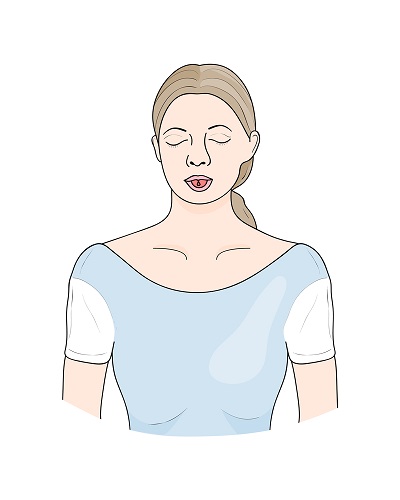
How to Practice:
- Sit in a comfortable position with your back straight.
- Curl or purse your tongue.
- Breathe slowly through the tongue/lips, exhale through the nose.
- Do this 5–10 times and extend your time.
Tips:
- Perform the exercise after workouts or intense emotional conditions
- Concentrate on the coolness as you breathe in.
Benefits:
- Alleviates heat from the body and mind
- Brings stress, anger, and anxiety under control
- Supports digestion and metabolism
- Brings a cold, quiet union to the whole system
5. The Sun Breath (Surya Bhedana Pranayama)
Solar Breath, or Yogic breathing, consists mainly of right nostril breathing practices in yoga. It’s a great tool, especially when you want a little pick-me-up or more focus/or mental clarity. While other breaths calm the nervous system, Solar Breath promotes activation and alertness – it’s excellent in the morning or before any task that needs concentration.
It works by stimulating the body’s subtle energy channels, enhancing circulation, and resuscitating physical and mental vitality. It may also promote equilibrium of internal heat, aid digestion, and support metabolism. Method: Many yogis use this breath prior to practice, meditation, or when they feel tired and wish to rejuvenate without consuming energy in the form of large meals.

How to practice:
- Choose a quiet and comfortable location with few distractions. Put your phone and other devices away.
- Sit with a straight back, which can be either cross-legged or in another chair. You can also do these lying down if you find it necessary, but sitting is good for concentration. Close your eyes, or let your gaze go soft.
- Use your right hand to softly press the left nostril closed with your ring finger. Rest your thumb free for added support if necessary.
- Gently (and deeply) inhale through the right nostril, drawing air into your belly first, then ribs and upper chest. Instead, aim to breathe into every aspect of your chest.
- If you like, hold here for a little while, letting the energy move through your body.
- Close off the right nostril and open up the left nostril, then exhale all of the air slowly.
- Repeat this cycle for no more than about 5 minutes at first, building up to time limits you feel comfortable reaching. Take smooth, even breaths and think about what you’re feeling.
Tips for Best Results:
- If this is new for you, start with 2–3 minutes and work your way up to 5–10.
- For best energy levels, perform it before eating, or at least two hours after a meal.
- Performing light stretches or yoga moves can enhance this warming effect even further.
- Please do not force or control the breath; let it be natural and easy.
- Pay attention to how your mind and body feel before and after practice, so you can see the effects of a bit of energising.
Benefits of Solar Breath:
- Great for the morning, or any time you feel sluggish.
- Awakens your brain to assist in tasks that require attention.
- Increases oxygen flow throughout the body and keeps you warm.
- The synergy proactively enhances its ability to harmonise body and mind, leaving you feeling rejuvenated.
- Stimulates the system without over-stimulating the nervous system.
6. Humming Breath (Bhramari Pranayama)
Perfect to focus, relieve stress, eliminate anxiety, and kill time. It’s also great for improving concentration and mindfulness by turning your attention inward.

How to Practice:
- Sit down somewhere and close your eyes.
- Covering your ears so the pads of your index fingers seal them from outside noise.
- Deeply inhale through the nose, filling up the belly.
- Exhale, humming “mmmm,” and feel the vibrations. Repeat 5–10 times.
Tips:
- Feel them vibrating in your brain and chest!
- Use whenever you begin to feel anxiety or out of balance.
Benefits:
- Reduces stress, anger, and anxiety
- Triggers the vagus nerve for a relaxation response
- Improves focus and mindfulness
- Quality of sleep and clarity of thought are enhanced.
Other Pranayama exercises
The Bellows Breath (Bhastrika)
Bhastrika is a different breathing technique in yoga that gives you a boost of energy and builds lung capacity to calm stress with rapid, vigorous breathing patterns. Begin with a slow start and avoid if you have health conditions such as asthma or high blood pressure.
How to do: Inhale very deeply, exhale very forcibly, and repeat for several rounds.
The Lunar Breath (Chandra Bhedana)
Chandra Bhedana, or the moon breath, grounds the mind and saps heat from the body by breathing through your left nostril. It is relaxing, and I sleep better.
How to do: Block the right nostril, inhale through the left, exhale through the right, and do this for a few minutes.
Conclusion
Ayurveda says that the mind and body are like twin flames—inseparable and always shaping each other. During meditation, you not only hush your mind and expand your awareness but also balance your body’s connection with the soul. As your heart and breath recover to a more balanced rhythm, the secretion of ‘stress’ hormones is regulated and the production of happier brain chemicals is boosted.
Powerful, isn’t it? How something as simple as conscious breathing can transform both your mind and body. If you want to experience this power and further explore Paryanama, you can consider joining 200 Hour Yoga Teacher Training Course at Rishikul Yogshala. This program integrates pranayama practice with yoga philosophy, anatomy, and holistic teaching methods, nurturing the soul and enhancing the mind of a curious fellow.

MEDITATION, INSPIRATIONAL AND SPIRITUAL GUIDE
Yogi Gangesha Chaitanya is a master of Yoga Philosophy, Meditation, Pranayama, and Spiritual Guidance, trained under Swami Rama and renowned institutions like the Himalayan Tradition and Sri Aurobindo Ashram. With expertise in Kundalini Yoga and meditation, he mentors students in 200-hour and 300-hour Yoga Teacher Training programs, guiding them toward inner awareness, spiritual growth, and a deeper understanding of yoga.
View Instagram Profile

